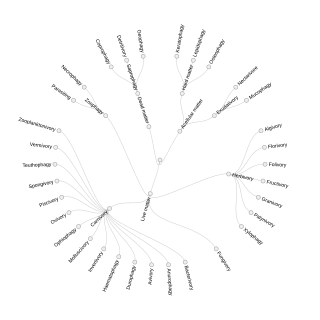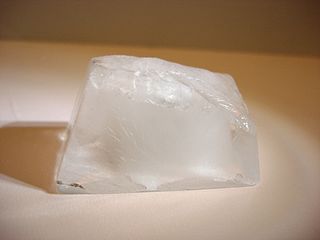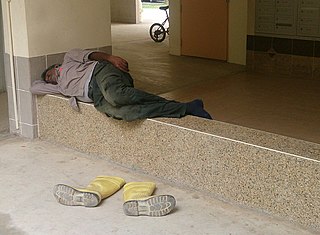 W
WEating is the ingestion of food, typically to provide a heterotrophic organism with energy and to allow for growth. Animals and other heterotrophs must eat in order to survive — carnivores eat other animals, herbivores eat plants, omnivores consume a mixture of both plant and animal matter, and detritivores eat detritus. Fungi digest organic matter outside their bodies as opposed to animals that digest their food inside their bodies. For humans, eating is an activity of daily living. Some individuals may limit their amount of nutritional intake. This may be a result of a lifestyle choice, due to hunger or famine, as part of a diet or as religious fasting.
 W
WFeeding is the process by which organisms, typically animals, obtain food. Terminology often uses either the suffixes -vore, -vory, or -vorous from Latin vorare, meaning "to devour", or -phage, -phagy, or -phagous from Greek φαγεῖν, meaning "to eat".
 W
WAlgophagy is a feeding behaviour whereby an animal eats algae as a food source. Algae is a group of photosynthetic organisms that mostly rely on aquatic environments. They grow low to the ground as they lack vascular tissue, an adaptation postdating their origin. While the group of algal species is large, it is generally accepted that algae is high in nutritional value and often contain a variety of concentrated vitamins and minerals.
 W
WAllofeeding is a type of food sharing behaviour observed in cooperatively breeding species of birds. Allofeeding refers to a parent, sibling or unrelated adult bird feeding altricial hatchlings, which are dependent on parental care for their survival. Allofeeding also refers to food sharing between adults of the same species. Allofeeding can occur between mates during mating rituals, courtship, egg laying or incubation, between peers of the same species, or as a form of parental care.
 W
WBubble-net feeding is a feeding behavior engaged in by humpback whales and Bryde's whales. It is one of the few surface feeding behaviors that humpback whales are known to engage in. This type of feeding can be done alone or in groups with as many as twenty whales participating at once. Whales can also perform a similar method of surface feeding called "lunge feeding".
 W
WCoprophagia or coprophagy is the consumption of feces. The word is derived from the Ancient Greek: κόπρος copros, "feces" and φαγεῖν phagein, "to eat". Coprophagy refers to many kinds of feces-eating, including eating feces of other species (heterospecifics), of other individuals (allocoprophagy), or one's own (autocoprophagy) – those once deposited or taken directly from the anus.
 W
WDetritivores are heterotrophs that obtain nutrients by consuming detritus. There are many kinds of invertebrates, vertebrates and plants that carry out coprophagy. By doing so, all these detritivores contribute to decomposition and the nutrient cycles. They should be distinguished from other decomposers, such as many species of bacteria, fungi and protists, which are unable to ingest discrete lumps of matter, but instead live by absorbing and metabolizing on a molecular scale. However, the terms detritivore and decomposer are often used interchangeably but they are different organisms. Detritivores are usually arthropods and help in the process of remineralization. Detritivores perform the first stage of remineralization, by fragmenting the dead plant matter, allowing decomposers to perform the second stage of remineralization.
 W
WThe golden eagle is one of the most powerful predators in the avian world. One author described it as "the pre-eminent diurnal predator of medium-sized birds and mammals in open country throughout the Northern Hemisphere". Golden eagles usually hunt during daylight hours, but were recorded hunting from one hour before sunrise to one hour after sunset during the breeding season in southwestern Idaho. The hunting success rate of golden eagles was calculated in Idaho, showing that, out of 115 hunting attempts, 20% were successful in procuring prey. A fully-grown golden eagle requires about 230 to 250 g of food per day. In the life of most eagles, there are cycles of feast and famine, and eagles have been known to go without food for up to a week. Following these periods without food, they will then gorge on up to 900 g (2.0 lb) at one sitting. The powerful talons of the golden eagle ensure that few prey can escape them once contact is made. The talons of this species exert approximately 440 pounds per square inch (3 MPa) of pressure, around 15 times more pressure than is exerted by the human hand, although some claim that the largest individual females may reach a pressure of 750 psi (5.2 MPa). Few other large raptors have been tested in their foot strength, though the huge harpy eagle, when tested, exerted a psi approximately 40 kg (88 lb) greater than the tested golden eagle. It has been claimed that the golden eagle can lift more than its own body weight in flight. However, other sources claim that a hare, marmot or deer calf weighing 4 kg (8.8 lb) is a struggle for even a large female to carry and that prey much over 2 kg (4.4 lb) would require favorably high wind conditions.
 W
WThe tawny owl is an opportunistic and generalized predator. Peak hunting activity tends to occur largely between dusk to midnight, with owls often following an erratic hunting pattern, perhaps to sites where previous hunts were successful. When feeding young, hunting may need to be prolonged into daylight in the early morning. Based on hand-reared young owls that re-released into the wild, hunting behaviour is quite innate rather than learned. Normally this owl hunts from a perch. Perching bouts usually last from about 8 to 14 minutes depending largely on habitat. Tawny owl's hunting from a perch or pole can recall a buzzard and the two take similar prey sizes as well. However, high initial speed and maneuvering among trees and bushes with great dexterity may allow it to surprise relatively large prey, more like a goshawk. The tawny owl is capable of lifting and carrying off in flight individual prey weighing up to at least 320 g (11 oz). Their middle talon, the most enlarged claw on owls, measures an average of 19.1 mm (0.75 in). While not as large as those of the Ural owl, the talons are extremely sharp, stout and quite decurved. The claws are considered to be visibly more overdeveloped than those of other European mid-sized owls and the footspan including the claws is fairly larger as well, at an average of about 13.4 cm (5.3 in). The hunting owl often extends its wings to balance and control prey upon impact. Alternatively, this species may hunt from flight. This occurs from 2 to 3 m over the ground, often over open habitats such as bushes, marsh or grassland, forming a quartering or zigzag pattern over the opening. During these flights they cover about 30 to 50 m before changing direction. Hunting from flight was surprisingly prevalent in a Swedish study of two radio-tagged birds, with 34% of study time spent hunting from flight while 40% of the study time was spent on hunting from a perch. In a similar study in England, less than 1% of time was spent hunting from flight. In a more deliberate variation of hunting from flight, the hunting owl may examine crags and nest boxes or also hover around prey roosts. In the latter type of hunts, the tawny owls may strike branches and/or beat their wings together in front of denser foliage, bushes or conifers in order to disturb and flush prey such as small birds and bats, or may dive directly into said foliage. Hovering has also been recorded in differing circumstances, including one incidence of an owl hunting a small bird that was caught on the wing after a hovering flight. Tawny owls have also taken bats on the wing as well and have been seen to hawk large, relatively slow-flying insects such as some beetles and moths in flight. Caterpillars may too be taken from trees. Usually these hunting variations are correlated with poor weather hampering the capture of preferred prey. Tawny owls eat worms with relative frequency, as they often hear them apparently from below the surface and snatch them up from shallow dirt or below leaf litter. Their worm-hunting style recalls worm hunting techniques by most other birds and they were recorded to eat 0.39 worms per minute during an hour of observation in England and were sometimes seen to feed on worms during daylight. Other hunting from the ground has been observed, often of insects such as beetles, but tawny owls have also been reported to "leap" upon from a ground vantage point in order to capture a vole, quite like foxes often do. There are now many accounts of tawny owls feeding on carrion from a wide range of sources, including hares, rats, sheep, and trout.
 W
WDietary indiscretion is the tendency for certain animals to feed on unusual items, or undergo drastic changes in feeding behaviour. The unusual items can include non-foodstuffs, such as garbage or foreign objects, or foodstuffs that are not normally consumed by the animal. The changes in feeding behaviour can include the ingestion of spoiled or raw food, or consuming abnormally large quantities of food. Dietary indiscretion is relatively uncommon in humans, but is especially prevalent in domesticated animals, such as dogs, as a result of their close contact with their human owners.
 W
WThe prohibition "do not feed the animals" reflects a policy forbidding the artificial feeding of wild or feral animals. Signs displaying this message are commonly found in zoos, circuses, animal theme parks, aquariums, national parks, parks, public spaces, farms, and other places where people come into contact with wildlife. In some cases there are laws to enforce such no-feeding policies.
 W
WThe feeding behaviour of Tyrannosaurus rex has been studied extensively. The well known attributes of T. rex are often interpreted to be indicative of either a predatory or scavenging lifestyle, and as such the biomechanics, feeding strategies and diet of Tyrannosaurus have been subject to much research and debate.
 W
WIn ecology, a feeding frenzy occurs when predators are overwhelmed by the amount of prey available. For example, a large school of fish can cause nearby sharks, such as the lemon shark, to enter into a feeding frenzy. This can cause the sharks to go wild, biting anything that moves, including each other or anything else within biting range. Another functional explanation for feeding frenzy is competition amongst predators. This term is most often used when referring to sharks or piranhas. It has also been used as a term within journalism.
 W
WForaging is searching for wild food resources. It affects an animal's fitness because it plays an important role in an animal's ability to survive and reproduce. Foraging theory is a branch of behavioral ecology that studies the foraging behavior of animals in response to the environment where the animal lives.
 W
WGeophagia, also known as geophagy, is the intentional practice of eating earth or soil-like substances such as clay, chalk, or termite mounds. It occurs in many non-human animals and has been documented in more than 100 primate species. Geophagy also occurs in humans and is most commonly reported among children and pregnant women. Human geophagia is a form of pica – the craving and purposive consumption of non-food items – and is classified as an eating disorder in the Diagnostic and Statistical Manual of Mental Disorders (DSM) if not socially or culturally appropriate. Although its etiology remains unknown, geophagy has many potential adaptive health benefits as well as negative consequences.
 W
WHadrosaurids, also commonly referred to as duck-billed dinosaurs or hadrosaurs, were large terrestrial herbivores. The diet of hadrosaurid dinosaurs remains a subject of debate among paleontologists, especially regarding whether hadrosaurids were grazers who fed on vegetation close to the ground, or browsers who ate higher-growing leaves and twigs. Preserved stomach content findings have indicated they may have been browsers, whereas other studies into jaw movements indicate they may have been grazers.
 W
WHoarding or caching in animal behavior is the storage of food in locations hidden from the sight of both conspecifics and members of other species. Most commonly, the function of hoarding or caching is to store food in times of surplus for times when food is less plentiful. However, there is evidence that some amount of caching or hoarding is done in order to ripen the food, called ripening caching. The term hoarding is most typically used for rodents, whereas caching is more commonly used in reference to birds, but the behaviors in both animal groups are quite similar.
 W
WIn politics, humanitarian aid, and the social sciences, hunger is defined as a condition in which a person does not have the physical or financial capability to eat sufficient food to meet basic nutritional needs for a sustained period. In the field of hunger relief, the term hunger is used in a sense that goes beyond the common desire for food that all humans experience. The most extreme form of hunger, when malnutrition is widespread, and when people have started dying of starvation through lack of access to sufficient, nutritious food, leads to a declaration of famine.
 W
WIntraguild predation, or IGP, is the killing and sometimes eating of a potential competitor of a different species. This interaction represents a combination of predation and competition, because both species rely on the same prey resources and also benefit from preying upon one another. Intraguild predation is common in nature and can be asymmetrical, in which one species feeds upon the other, or symmetrical, in which both species prey upon each other. Because the dominant intraguild predator gains the dual benefits of feeding and eliminating a potential competitor, IGP interactions can have considerable effects on the structure of ecological communities.
 W
WKleptopharmacophagy is a term used for describing the ecological relationship between two different organisms, where the first is stealing the second's chemical compounds and consuming them. This scientific term was proposed by Australian, Singaporean, and American biologists in September 2021 in an article that was published in the journal Ecology by the Ecological Society of America. The phenomenon was first noticed in milkweed butterflies that were attacking caterpillars and drinking their internal liquid, proposedly to obtain toxic alkaloids used for defense, as well as for mating purposes.
 W
WMalnutrition is a condition that results from eating a diet which does not supply a healthy amount of one or more nutrients. This includes diets that have too little nutrients or so many that the diet causes health problems. The nutrients involved can include calories, protein, carbohydrates, fat, vitamins or minerals. A lack of nutrients is called undernutrition or undernourishment while a surplus of nutrients cases overnutrition. Malnutrition is most often used to refer to undernutrition - when an individual is not getting enough calories, protein, or micronutrients. If undernutrition occurs during pregnancy, or before two years of age, it may result in permanent problems with physical and mental development. Extreme undernourishment, known as starvation or chronic hunger, may have symptoms that include: a short height, thin body, very poor energy levels, and swollen legs and abdomen. Those who are malnourished often get infections and are frequently cold. The symptoms of micronutrient deficiencies depend on the micronutrient that is lacking.
 W
WA mukbang or meokbang, also known as an eating show, is an online audiovisual broadcast in which a host consumes various quantities of food while interacting with the audience. It became popular in South Korea in 2010, and since then has become a global trend. Varieties of foods ranging from pizza to noodles are consumed in front of a camera.
 W
WNecrophages are organisms that obtain nutrients by consuming decomposing dead animal biomass. The term derives from Greek nekros, meaning 'dead', and phagein, meaning 'to eat'.
 W
WOsteophagy is the practice in which animals, usually herbivores, consume bones. Most vegetation around the world lacks sufficient amounts of phosphate. Phosphorus is an essential mineral for all animals, as it plays a major role in the formation of the skeletal system, and is necessary for many biological processes including: energy metabolism, protein synthesis, cell signaling, and lactation. Phosphate deficiencies can cause physiological side effects, especially pertaining to the reproductive system, as well as side effects of delayed growth and failure to regenerate new bone. The importance of having sufficient amounts of phosphorus further resides in the physiological importance of maintaining a proper phosphorus to calcium ratio. Having a Ca:P ratio of 2:1 is important for the absorption of these minerals, as deviations from this optimal ratio can inhibit their absorption. Dietary calcium and phosphorus ratio, along with vitamin D, regulates bone mineralization and turnover by affecting calcium and phosphorus transport and absorption in the intestine.
 W
WPagophagia is the compulsive consumption of ice or iced drinks. It is a form of the disorder known as pica, which in Latin refers to a magpie that eats everything indiscriminately. Its medical definition refers to the persistent consumption of nonnutritive substances for over a period of at least one month. However, different studies have included alternative definitions including "daily consumption of 2-11 full glasses of ice (480-2640g)" or "the purposeful ingestion of at least one ordinary tray of ice daily for a period in excess of two months." Pagophagia has been shown to be associated with iron-deficiency anemia and responsive to iron supplementation, leading some investigators to postulate that some forms of pica may be the result of nutritional deficiency.
 W
WPica is a psychological disorder characterized by an appetite for substances that are largely non-nutritive. The substance may be biological such as hair (trichophagia) or feces (coprophagia), natural such as ice (pagophagia) or dirt (geophagia), and otherwise chemical or manmade. The term originates from the Latin word pica ("magpie"), from the concept that magpies will eat almost anything.
 W
WFeeding is the process by which organisms, typically animals, obtain food. Terminology often uses either the suffixes -vore, -vory, or -vorous from Latin vorare, meaning "to devour", or -phage, -phagy, or -phagous from Greek φαγεῖν, meaning "to eat".
 W
WPostprandial somnolence is a normal state of drowsiness or lassitude following a meal. Postprandial somnolence has two components: a general state of low energy related to activation of the parasympathetic nervous system in response to mass in the gastrointestinal tract, and a specific state of sleepiness. While there are numerous theories surrounding this behavior, such as decreased blood flow to the brain, neurohormonal modulation of sleep through digestive coupled signaling, or vagal stimulation, very few have been explicitly tested. To date, human studies have loosely examined the behavioral characteristics of postprandial sleep, demonstrating potential shifts in EEG spectra and self-reported sleepiness. To date, the only clear animal models for examining the genetic and neuronal basis for this behavior are the fruit fly, the mouse, and the nematode Caenorhabditis elegans.
 W
WPredatory dinoflagellates are predatory heterotrophic or mixotrophic alveolates that derive some or most of their nutrients from digesting other organisms. About one half of dinoflagellates lack photosynthetic pigments and specialize in consuming other eukaryotic cells, and even photosynthetic forms are often predatory.
 W
WRegurgitation is the expulsion of material from the pharynx, or esophagus, usually characterized by the presence of undigested food or blood.
 W
WSaprophages are organisms that obtain nutrients by consuming decomposing dead plant or animal biomass. They are distinguished from detritivores in that saprophages are sessile consumers while detritivore are mobile. Typical saprophagic animals include sedentary polychaetes such as amphitrites and other terebellids.
 W
WThanatophages, are organisms that obtain nutrients by consuming decomposing dead plant biomass.
 W
WIn ethology and behavioral ecology, trap-lining or traplining is a feeding strategy in which an individual visits food sources on a regular, repeatable sequence, much as trappers check their lines of traps. Traplining is usually seen in species foraging for floral resources. This involves a specified route in which the individual traverses in the same order repeatedly to check specific plants for flowers that hold nectar, even over long distances. Trap-lining has been described in several taxa, including bees, butterflies, tamarins, bats, rats, and hummingbirds and tropical fruit-eating mammals such as opossums, capuchins and kinkajous. Traplining is used to term the method in which bumblebees and hummingbirds go about collecting nectar, and consequently, pollinating each plant they visit. The term "traplining" was originally coined by Daniel Janzen, although the concept was discussed by Charles Darwin and Nikolaas Tinbergen.
 W
WTrophallaxis is the transfer of food or other fluids among members of a community through mouth-to-mouth (stomodeal) or anus-to-mouth (proctodeal) feeding. Along with nutrients, trophallaxis can involve the transfer of molecules such as pheromones, organisms such as symbionts, and information to serve as a form of communication. Trophallaxis is used by some birds, gray wolves, vampire bats, and is most highly developed in social insects such as ants, wasps, bees, and termites.